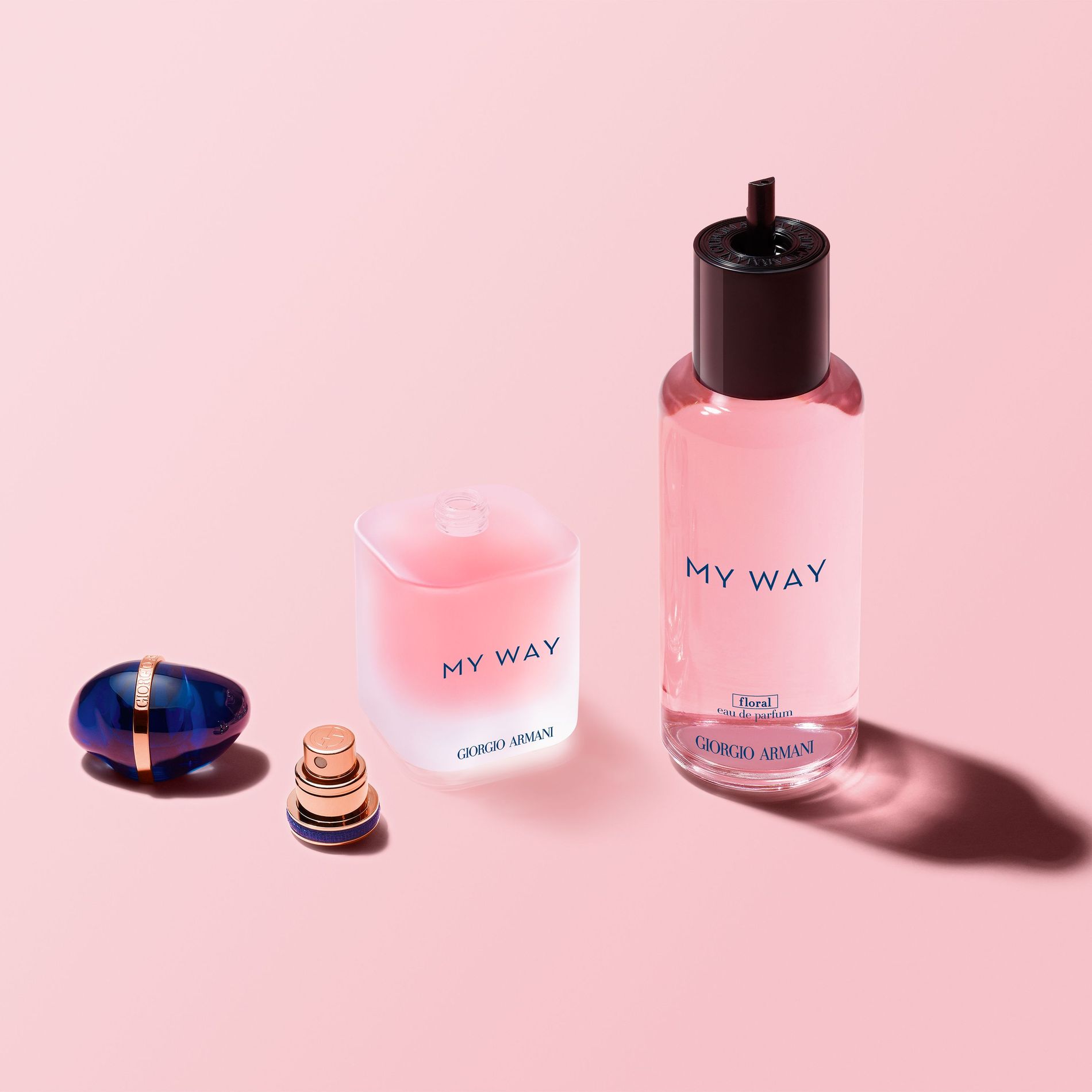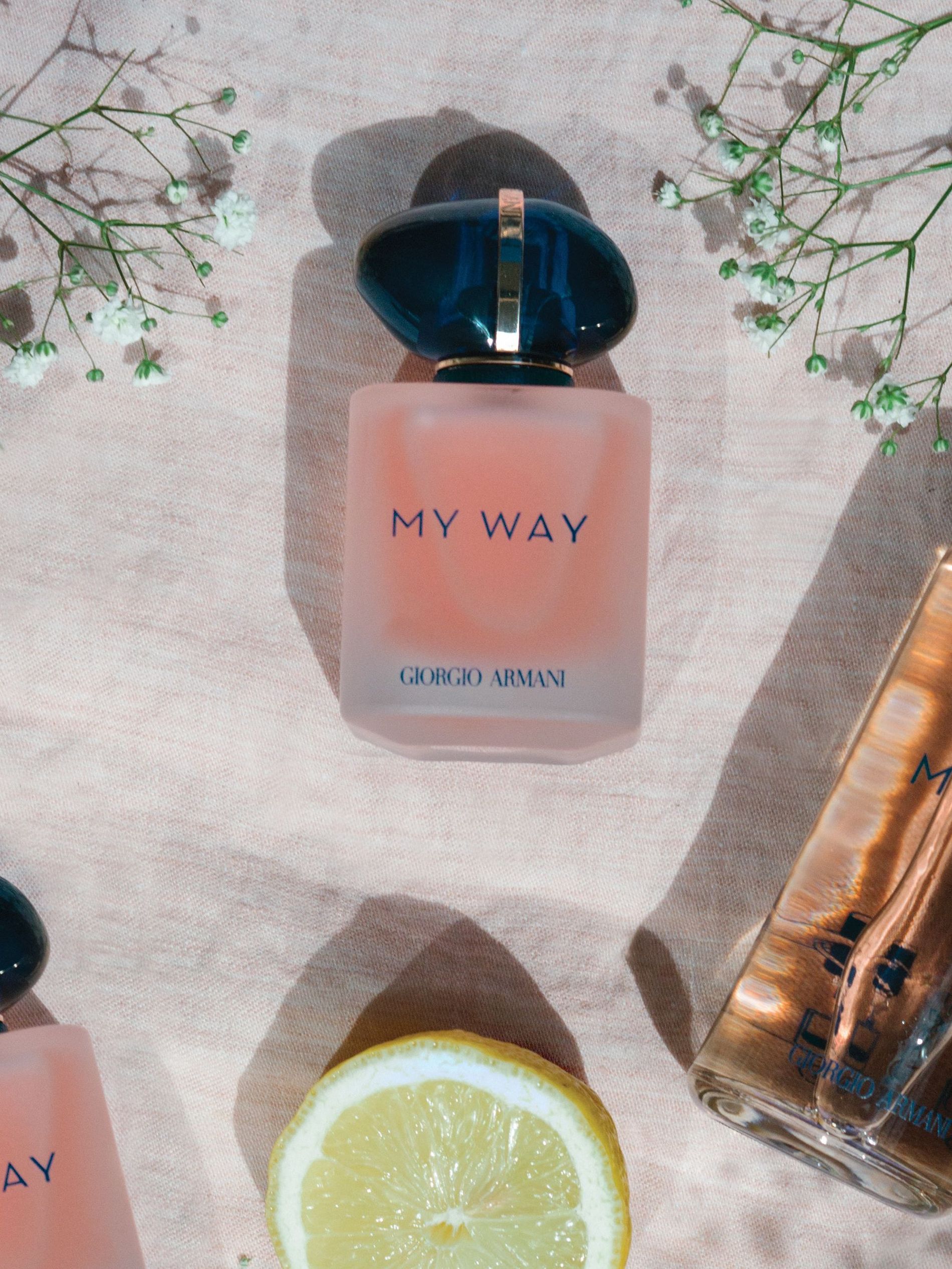It can be easy to forget about the environmental impact when you’re applying your favourite fragrance, but a big change is happening in the industry that put Mother nature front of mind
In collaboration with Armani Beauty.
Fragrance is one of the steadiest subcategories within beauty. While skincare and makeup are constantly changing, evolving, and growing through new technologies, fragrance has kept itself strong, centred, and stable. The centuries-old system of mixing oils with alcohol or water, spritzing it onto one-self and going about the day has proved highly effective and stood the test of time.
Nonetheless, as sustainability has become a pivotal aspect of every industry, the question of how to make perfumes more sustainable is one the industry is starting to address. “One of the ways the fragrance industry has become more sustainable has been through their ingredients,” explains Johanna Ljunggren, a beauty writer with over 20 years of experience. “Some plant-based ingredients have become hard to source due to climate change and overproduction. It takes a lot of flowers to produce a few millilitres of fragrance oil.”
In addition to ethically-sourcing ingredients, one of the biggest impacts that a fragrance brand can have on the environment is by addressing their packaging and delivery methods. And one of the biggest changes in the industry in recent years has been the introduction of refillable flacons.

Classic-shaped My Way Floral frosted bottle with the refillable flacon .
The new, sustainable way
Proving that sustainability is far from being a niche interest, Armani Beauty is leading the way in pushing new environmentally friendly initiatives for the beauty industry. In 2020, Armani introduced for the first time an innovative at home refill system for the launch of the feminine floral fragrance My Way, followed in 2022 by the new Acqua di Gio Eau de parfum. While many scents come with one-time packaging that often ends up in the bin, in the case of refillable perfumes, once the glorious liquid from within is finished, the container can be loaded up again with your favourite fragrance, bypassing the need for a new bottle. Not only does this diminish the amount of waste from the product itself, but it also cuts the production emissions associated with the creation of an entirely new container.
“Refillable products will be something the future consumer will require,” says Ljunggren. “We must move away from the use of plastics and single-use products. Even when glass can be recycled, it’s harder to ship. Refillable products, paired with other efforts like conscious packaging, minimise carbon emissions and hopefully even inspires brands to put more love into the design of their products as it’s something the consumer will have for a long time.”
It's a numbers thing
While the refillable process of the bottles itself is as easy as can be — simply turning the refill bottle upside down and decanting the product into the original flacon, no funnel needed — the numbers show that what feels like a small gesture can have a huge impact.
L’Oreal internal calculations project that My Way’s 50ml bottle and its 150ml refill bottle represent a 64 percentage reduction in the fragrance’s carbon emissions. Compared to using four spray bottles of 50ml, the 50ml spray and its 150ml refill bottle together represent a 32 percentage reduction in cardboard use, a 55 percentage reduction in glass use, a 64 percentage reduction in plastic use, and a 75 percentage reduction in metal use.
“When it comes to refillable fragrances, as long as the fragrance quality is intact, the question really is why wouldn't we want it to be refillable?” says Ljunggren. “Keep the big bottle at home and have a smaller veil for travelling. This will not only lead to less plastic emissions but also instils a respect that is currently lacking for the products we purchase. Not only can we help the environment, but we rethink our relationship with objects amidst a culture of disposability.”

